A walking tour along Dubrovnik's city walls is a phenomenal experience you don’t want to miss out on. Even the most pinchpenny person you know, that may grumble about the high City Walls ticket price will ultimately say it’s worth the money.
But the only disappointing thing is the lack of information. Any tourist planning to walk around this attraction should know that you don’t get any informational leaflets with your entrance ticket.
No written English guides were available. No on-location signage explanations along the way. No audio guides are included—very little information on the whole walk.
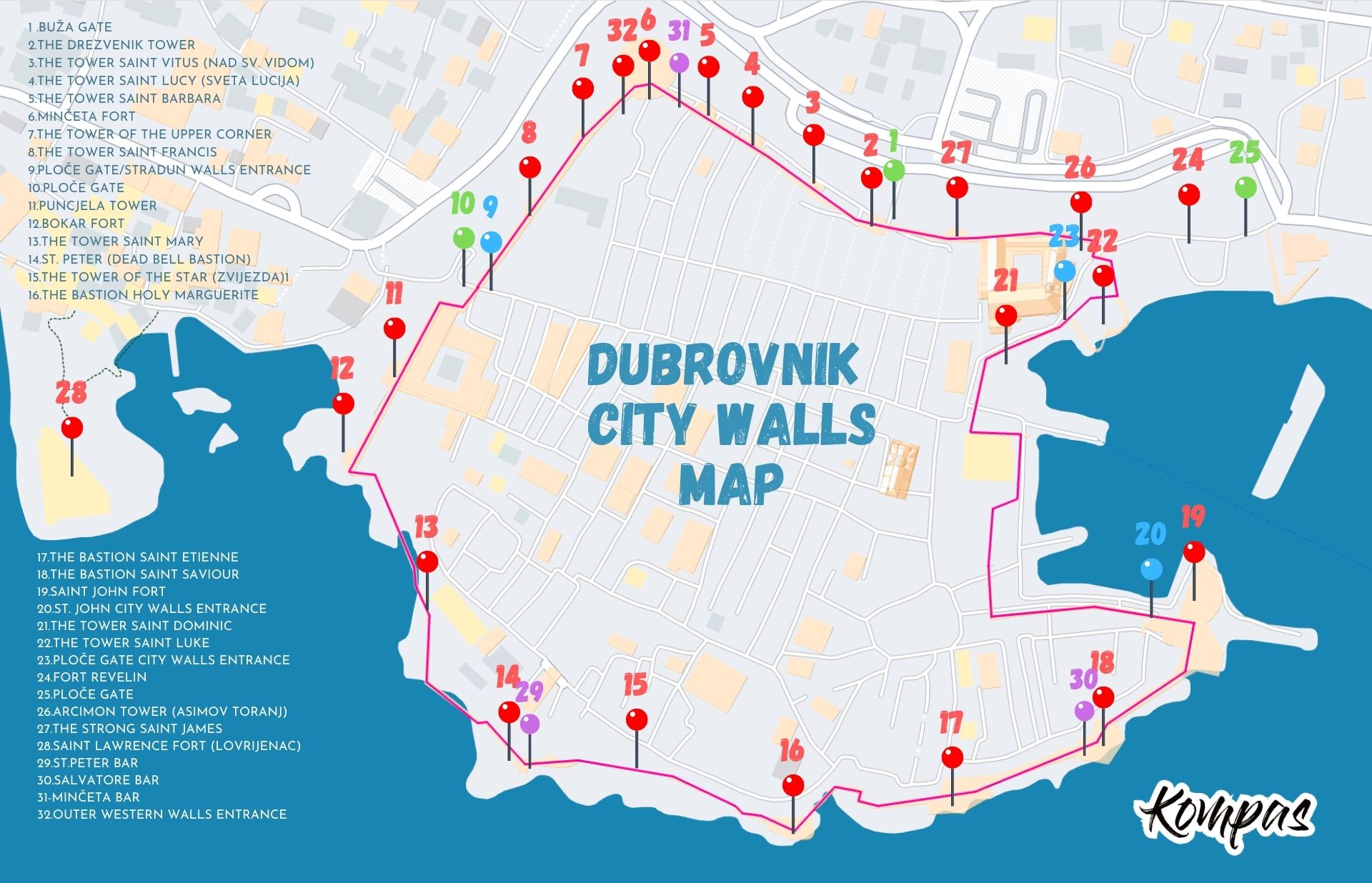
This map provides an overview of the wall’s structure and can help you better navigate your self-guided tour of them. I have identified key points of interest with information about the fortresses, bastions, and towers you will encounter during your visit.
With a Dubrovnik City Walls Map, visitors to the area can be sure to get some understanding of their explorations.
Tips: Read the guide to learn everything you need to know for walking Dubrovnik City Walls. Read information on how to visit, what to expect on your journey, and the best times to explore the walls.
This blog post will look at the benefits of having a Dubrovnik city walls map to make the most of your self-guided tour of the walls.
Location of the Walls
The Dubrovnik City Walls are a series of defensive walls found surrounding the Old Town of Dubrovnik, Croatia. The walls are a UNESCO World Heritage Site and are regarded as some of the best-preserved fortifications in Europe.
The walls, whose construction lasted from the 7th century to the 17th century, stretch around the city for 2 km. The shapes, sizes, and purposes of the forts along the City Walls evolved through history. The ancient walls are now from 6 to 25 meters high, with many named and nameless towers and fortresses.
Overview of the City Walls
The Walls of Dubrovnik Map presents an overview of all the forts, bastions, and towers you will encounter along the way. In addition, it shows the Gates through which you can access Old Town and the locations of all the City Walls entrances.
The Map reveals the locations of 22 towers and bastions. These points of interest provide unique views of the Old Town, the Adriatic Sea, and the islands in the distance.
Interesting: Five of these are the most notable forts are Minčeta, Revelin, Bokar, St. John, and Lovrijeneac. While they mostly served as a deterrent, the walls also have a rich history, with many battles and sieges. The map shows towers and bastions even the locals don't know the name of.
The main points of interest shown on the map are:
- Buža Gate
- The Drezvenik Tower
- The Tower Saint Vitus (Nad sv. Vidom)
- The Tower Saint Lucy (Sveta Lucija)
- The Tower Saint Barbara
- Minčeta Fort
- The Tower of the Upper Corner
- The Tower Saint Francis
- Ploče Gate/Stradun Walls Entrance
- Ploče Gate
- Puncjela tower
- Bokar Fort
- The Tower Saint Mary
- The Dead Bell Bastion (Mrtvo Zvono)
- The Tower of the Star (Zvijezda)
- The Bastion Holy Marguerite
- The Bastion Saint Etienne
- The Bastion Saint Saviour
- Saint John Fort
- St. John City Walls Entrance
- The Tower Saint Dominic
- The Tower Saint Luke
- Ploče Gate City Walls Entrance
- Fort Revelin
- Ploče Gate
- Arcimon Tower (Asimov Toranj)
- The Strong Saint James
- Saint Lawrence Fort (Lovrijenac)
Tips: One of the resting stops is the cute cafe bar on the south side of the walls overlooking the sea near point no. 16. The Bastion of Holy Marguerite. If you need any refreshments during your walk, that's the place to catch a break from the Sun and the heat.
Different entrances to the City Walls
The entrances will be the most important points on the map for any first-time visitor touring the Dubrovnik City Walls. There are three official entrances to the City Walls attraction that you can read more about.
Tips: The least know entrance show on the map is the one by the St. John fort. I would usually recommend to take this one if you know in advance that there will be cruise ship crowds present on the day of your visit.
The Pile Gate is the main entrance to the City Walls and is located on the western side of the Old Town. It is the most popular entrance at the Stradun promenade's beginning. And is the starting point for most tours that show you the walls
The Wall map also shows the location of the Ploče Gate entrance on the east side of the City Walls. It is the most convenient entrance for visitors arriving from the east. It is also the closest entrance to the popular Banje Beach.
Major landmarks along the walls
Beyond the stunning views of the Adriatic Sea, the nearby Lokrum island, and the towering Srđ hill on the other side, the city walls of Dubrovnik also offer the perfect view of major tourist landmarks in the Old Town. Since the walls walk take you a full circle around the Old Town, you can see the landmarks from all angles. Any photo you snap will be worthy of uploading on Instagram.
Photo Tip: Whether you are hunting for pics of picturesque sunsets, cool frames of stunning architecture, or a unique vantage point, the Walls of Dubrovnik are sure to make any photographer's dream come true at any time of the day. But if you are looking get photos of the Walls and want less people in the frame I suggest visiting very early in the morning or close to closing time at sunset.
Red roof tile houses, heaps of churches, and monasteries, big or small, such as the Franciscan Monastery and the Dominican Monastery, just lay in front of you. You can take in well-known attractions like the Rector’s Palace, the Sponza Palace, and the Church of St. Blaise from high up.
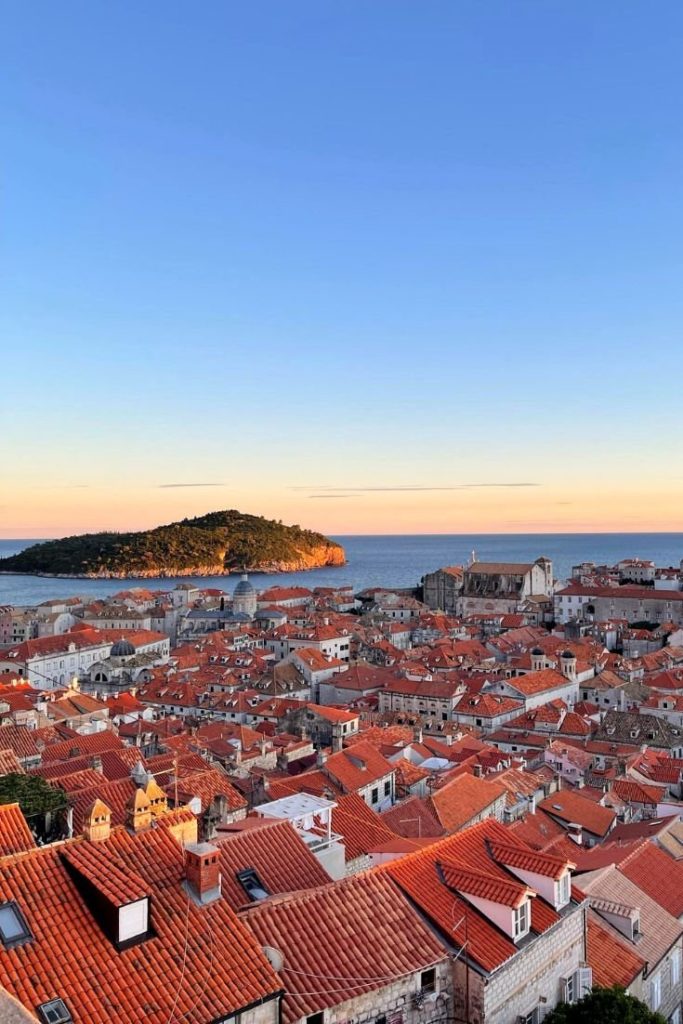
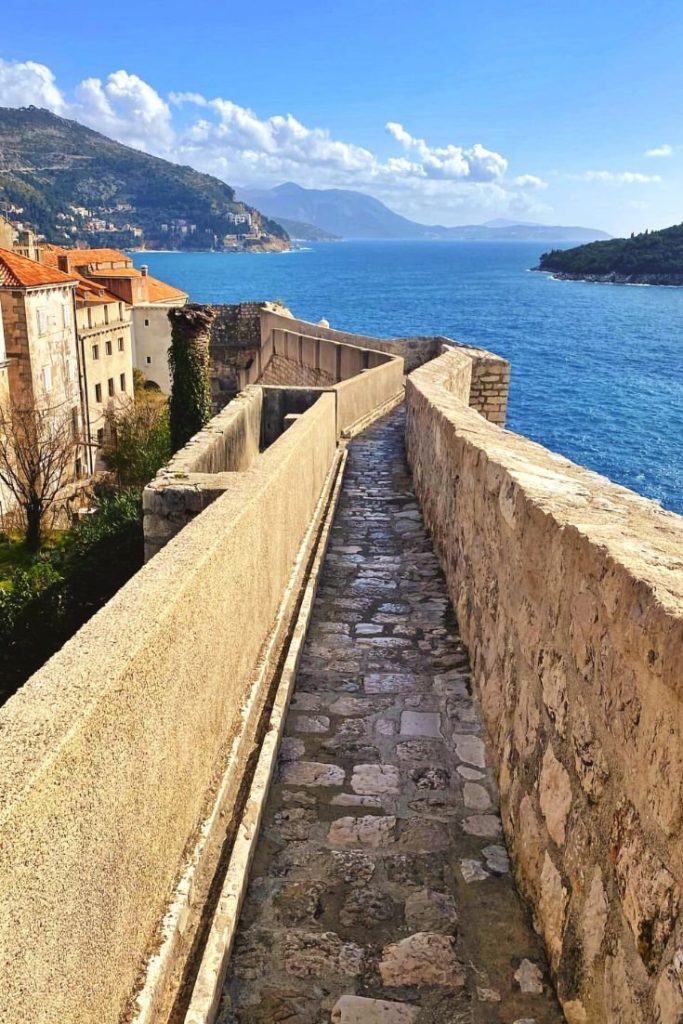
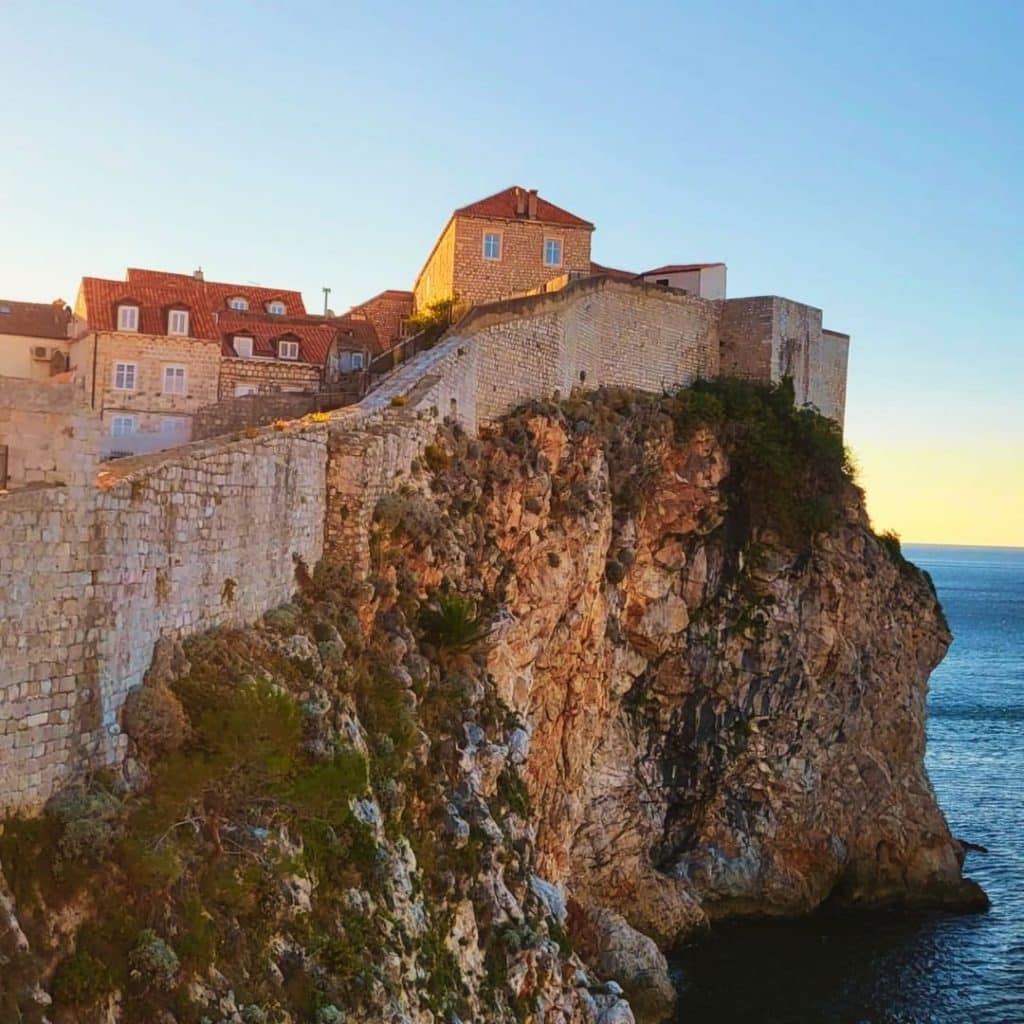
Let’s not forget the forts that are not part of the walls. Lovrijenac and the monumental Revelin get a new look when viewed from the walls. When you get to the south side, you can gaze down the 25-meter tall walls and upon the sea that crashes on the rocks. If you are lucky, you can even check out the cliff jumpers at Buža Beach doing their diving jumps.
Map of the routes to explore the walls
I would have loved to have created a map of the routes for you can take to explore the walls, but there is only one. When you climb the steps to get on top of the walls, you will be met with a sign showing you which direction to walk. The route sign makes you walk the walls counterclockwise.
Tips: The mandatory route makes sense, considering how narrow the passageway is at some points. If people were allowed to move whichever way they wanted, I can imagine it would create a bottleneck and a standstill.
While visiting the walls is perfectly fine on your own, as most visitors do, I felt I needed more information. More context and in-depth information on the setting would definitely make you appreciate the locale more.
That is why I suggest visitors take a guided tour of the Dubrovnik city walls and learn about the history of the city and its architecture.
Walls of Dubrovnik today are so impressive because they are one of the best preserved medieval structures in the world. The construction and intricate details of the walls reflect the centuries-old cultural and economic importance of the Dubrovnik Republic of Ragusa. The architecture of the walls is so powerful and gives visitors a glimpse into the ingenuity and resourcefulness of the city's past.
Walking the walls should not be missed. Hopefully, with the help of this Dubrovnik City Walls Map, travelers can explore its beauty while having some insights into what they are looking at and where to go.
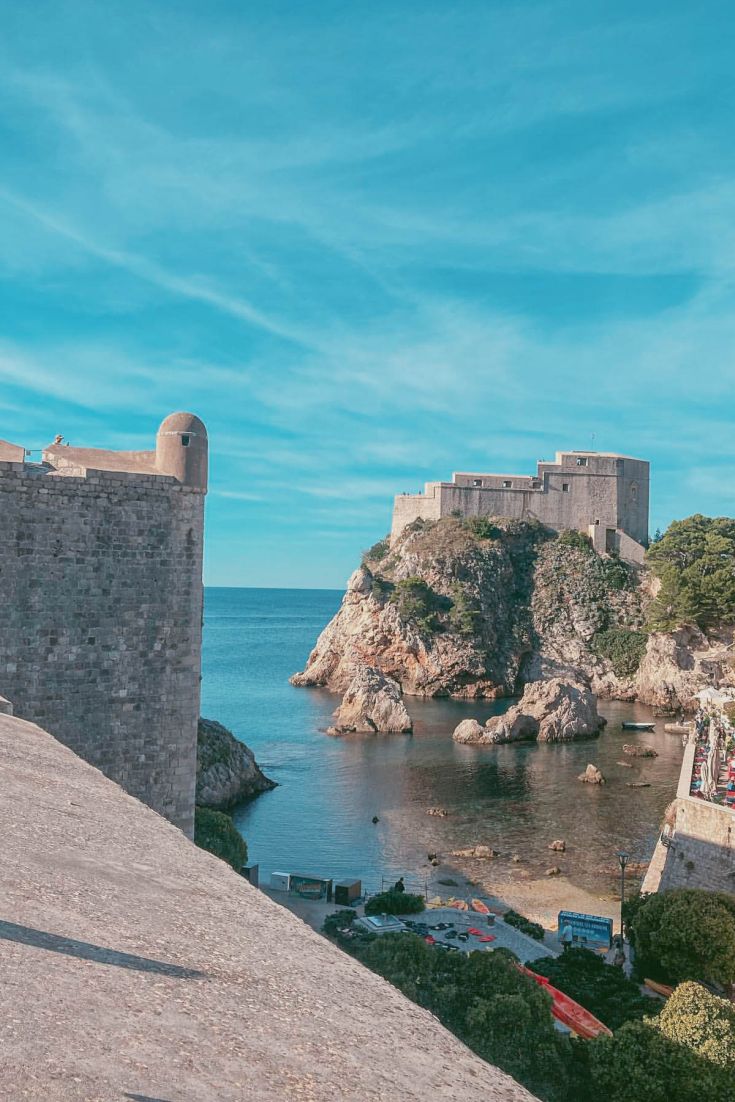
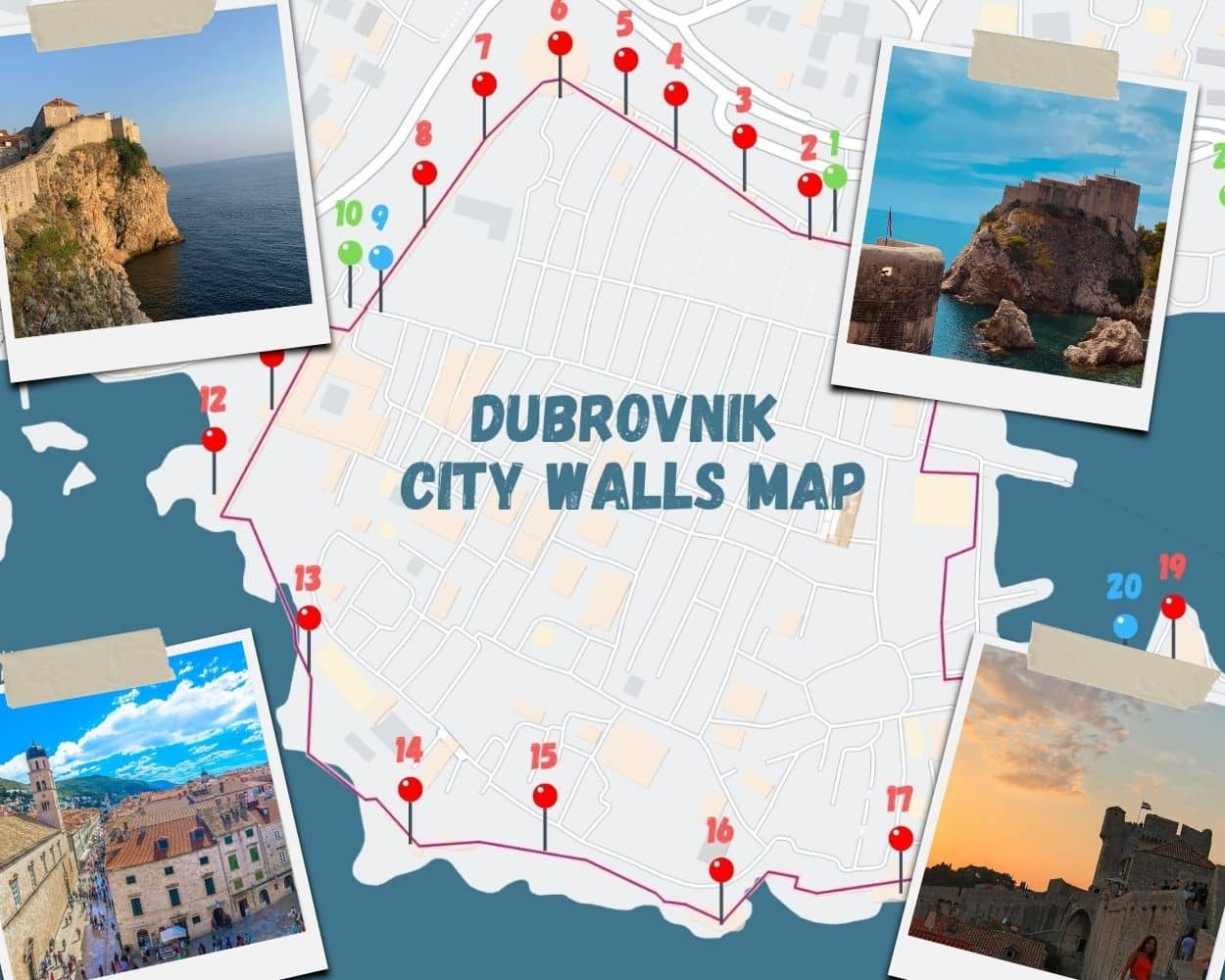
A very useful guide, however there is an error in the map and listings. You have the Ploče Gate and Stradun Entrance as 9 and 10 on the map, whereas this is actually the Pile Gate. Not a tragedy but could be confusing for some people.
Hey Jamie, you are right, that is an error, thanks for noticing. We will have it fixed.